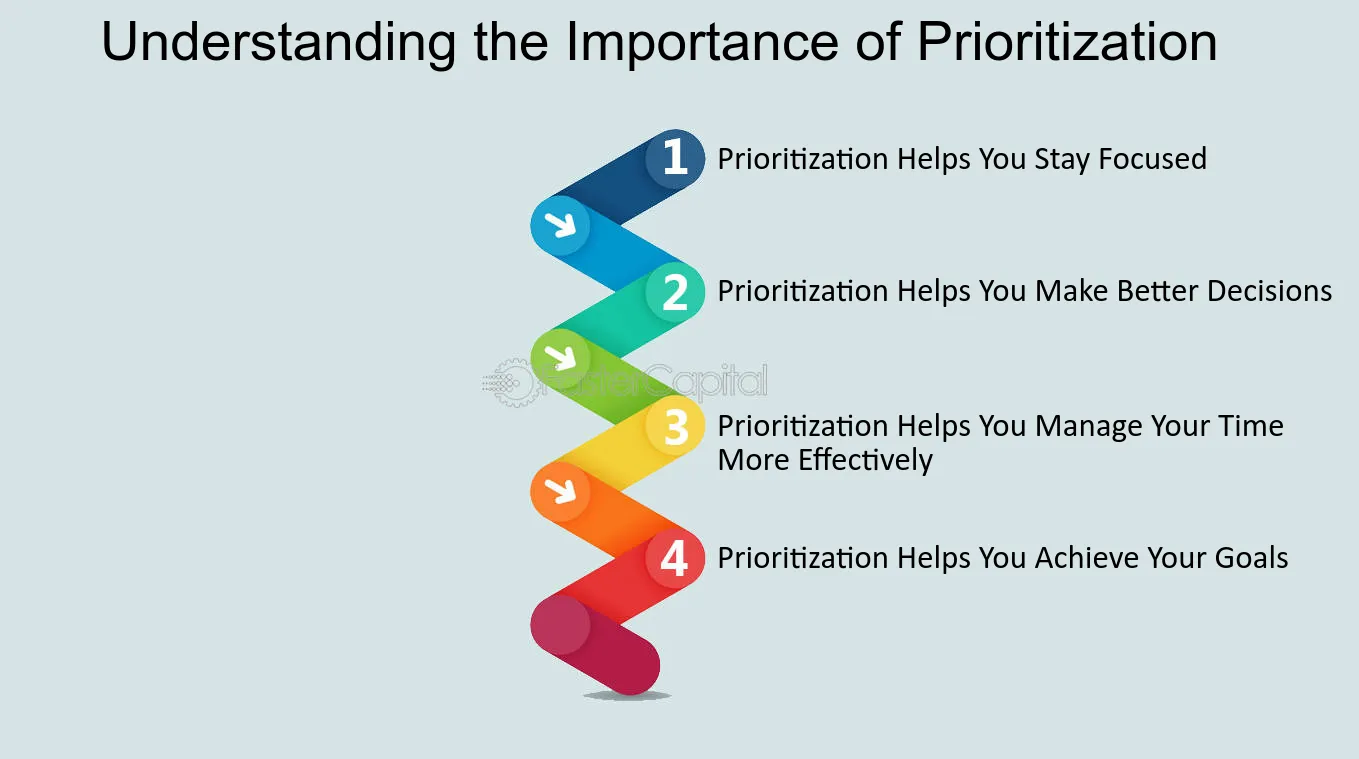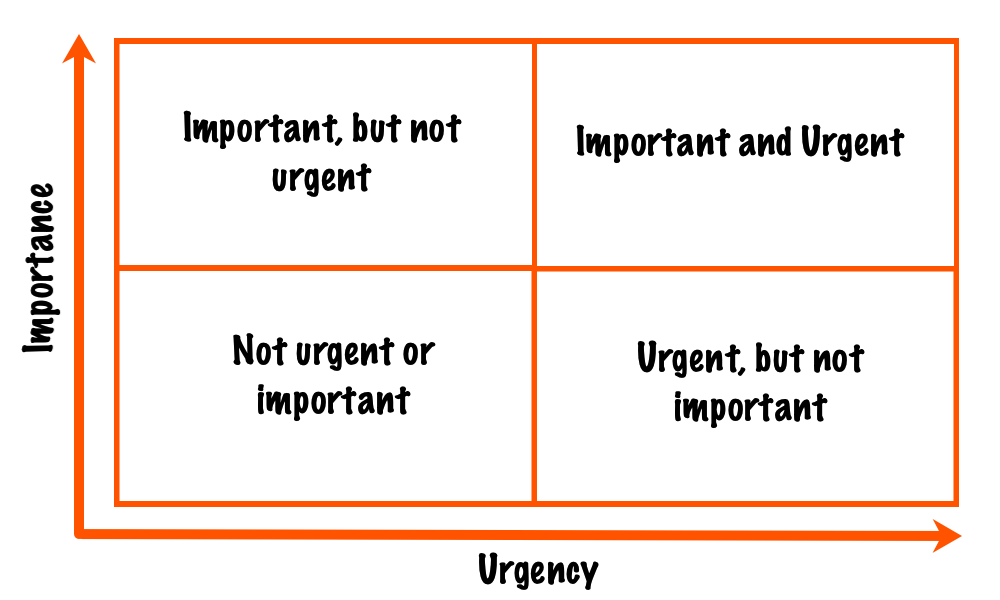The Importance of Prioritization
In a world filled with endless to-do lists, demands, and distractions, prioritization is the key to achieving meaningful success. It’s not just about managing time; it’s about managing focus, energy, and resources. Whether you’re a busy professional, a student, or a homemaker, understanding the importance of prioritization can be life-changing.
This article will delve deep into why prioritization matters, the strategies you can adopt, and how it can significantly impact your productivity and peace of mind.

What is Prioritization?
Prioritization is the process of arranging tasks, goals, or projects in order of importance or urgency. It helps you focus on what truly matters and ensures that your time and resources are spent efficiently.
Without prioritization, even the most dedicated efforts can result in burnout or missed opportunities. As Dwight Eisenhower famously said:
“What is important is seldom urgent, and what is urgent is seldom important.”
This concept forms the foundation of one of the most effective prioritization tools, the Eisenhower Matrix, which we’ll explore later.
Why is Prioritization Important?
- Improved Productivity
- By focusing on high-impact tasks, you can achieve more in less time.
- Stress Reduction
- Prioritizing reduces the overwhelm caused by juggling too many tasks.
- Better Decision-Making
- When priorities are clear, making decisions becomes straightforward.
- Efficient Resource Management
- Time, energy, and money are finite. Prioritization ensures they are used wisely.
- Achievement of Long-Term Goals
- It aligns daily actions with larger objectives, ensuring progress toward what matters most.
Key Principles of Effective Prioritization
1. The Eisenhower Matrix
The Eisenhower Matrix categorizes tasks into four quadrants:
| Quadrant | Action |
|---|---|
| Important and Urgent | Do it immediately. |
| Important but Not Urgent | Schedule it. |
| Urgent but Not Important | Delegate it. |
| Neither Urgent nor Important | Eliminate it. |
This tool is invaluable for distinguishing between tasks that need your attention and those that can wait.
2. The 80/20 Rule (Pareto Principle)
The Pareto Principle states that 80% of results come from 20% of efforts. Identify the 20% of tasks or actions that yield the most significant outcomes and focus your energy on them.
3. Advance Blocking
Create time blocks in your schedule dedicated to specific priorities. For example:
– Morning: High-focus tasks (e.g., strategy planning)
– Afternoon: Collaboration tasks (e.g., meetings)
– Evening: Review and preparation for the next day

Strategies to Prioritize Effectively
1. Identify Your Goals
Start with clarity. Ask yourself:
– What are my long-term objectives?
– What daily actions align with these objectives?
2. Use a Priority Framework
- ABC Method: Categorize tasks into:
- A: Critical
- B: Important
- C: Optional
- MoSCoW Method:
- Must have
- Should have
- Could have
- Won’t have
3. Regularly Reevaluate Priorities
Life is dynamic. What was important last month might not be now. Regular reviews ensure your focus remains relevant.
4. Avoid Multitasking
Studies show that multitasking reduces efficiency. Instead, practice deep work, dedicating undivided attention to one task at a time.
Tools to Help You Prioritize
- Digital Tools
- Trello: Organize tasks visually.
- Asana: Collaborate and track projects.
- Todoist: Create detailed to-do lists.
- Physical Planners
- Traditional planners allow for handwritten prioritization and planning.
- Books
- “Essentialism: The Disciplined Pursuit of Less” by Greg McKeown
- “The One Thing” by Gary Keller
Common Pitfalls in Prioritization
1. Focusing on Urgency Over Importance
Not every urgent task is important. Learn to differentiate between the two using the Eisenhower Matrix.
2. Overloading Your Plate
Taking on too much dilutes focus. Limit your daily priorities to 3-5 critical tasks.
3. Neglecting Personal Well-being
Your health and well-being are as important as professional success. Prioritize rest, exercise, and leisure.

Real-Life Examples of Prioritization
- Elon Musk’s Time Blocking
Elon Musk uses a time-blocking strategy, allocating his day into 5-minute slots to maximize productivity. -
Warren Buffett’s 5/25 Rule
Buffett advises listing 25 goals and circling the top 5, focusing only on them and avoiding the rest.
FAQs
1. What is the first step in prioritization?
Start by identifying your goals and breaking them into actionable tasks.
2. How do I balance work and personal priorities?
Use time-blocking to allocate dedicated time for both work and personal activities.
3. Can I delegate prioritization?
While you can delegate tasks, the act of prioritization should align with your values and goals.
Final Thoughts
Prioritization is more than a productivity hack—it’s a life skill. By identifying what truly matters and focusing on those tasks, you can achieve your goals while maintaining balance and reducing stress.
Remember, your time and energy are finite. Spend them on what truly counts.
Explore more on prioritization in our comprehensive guide or check out this insightful article on time management techniques.



